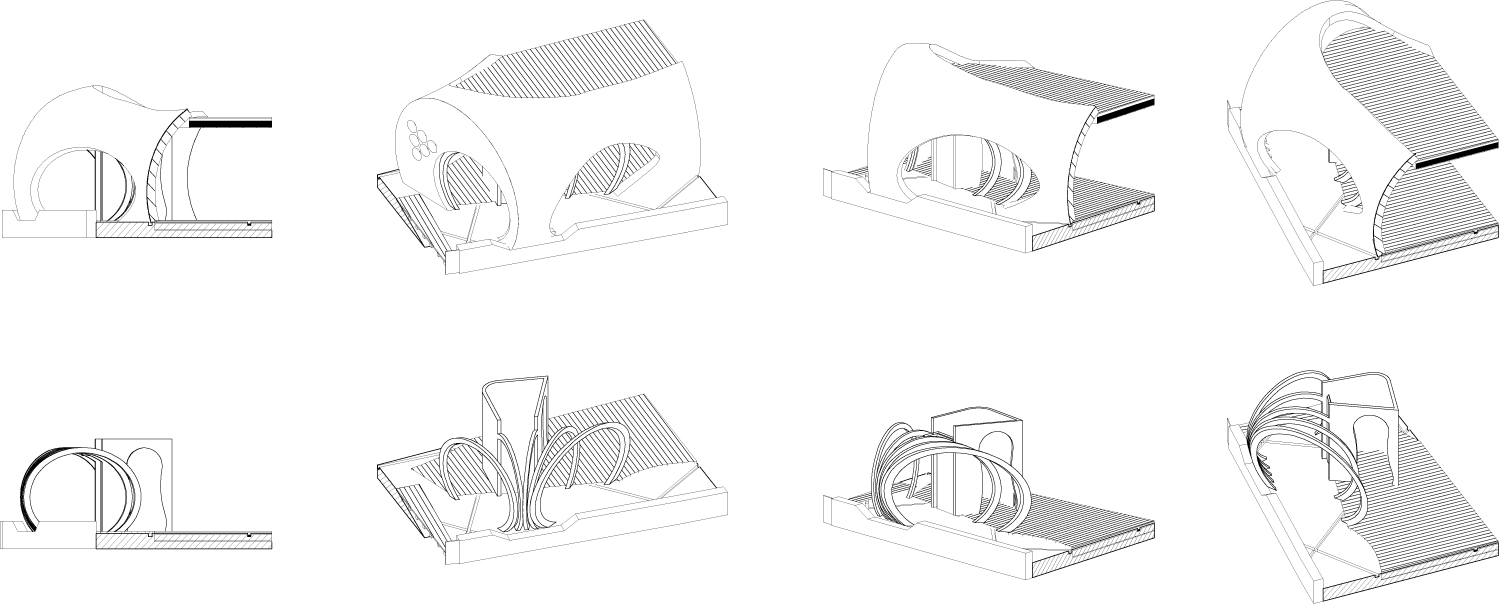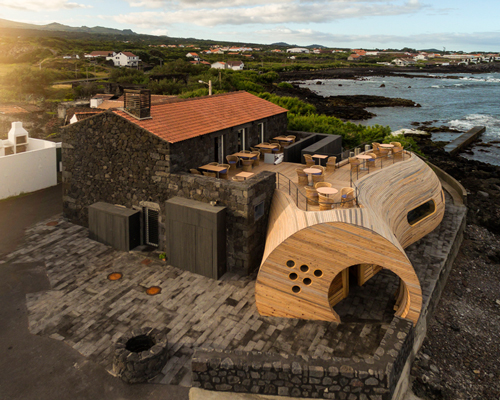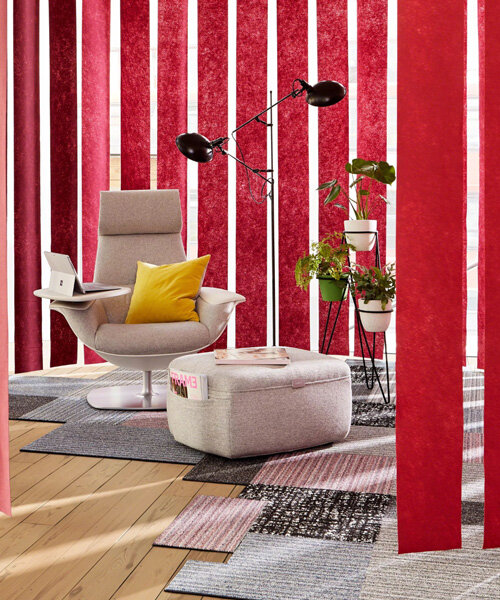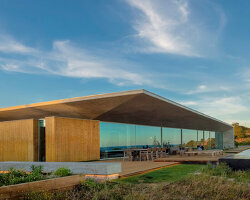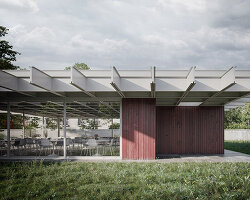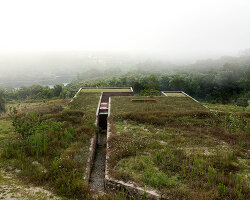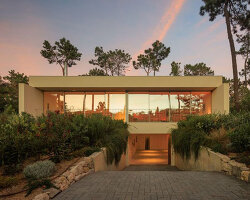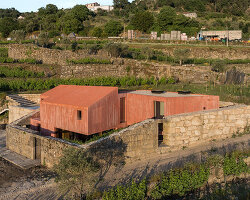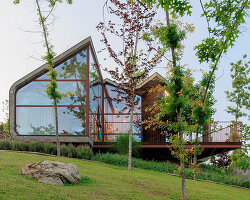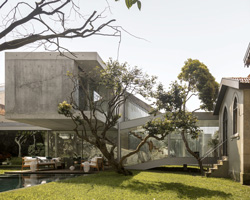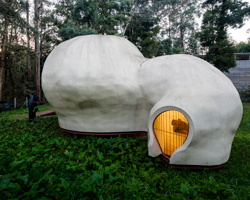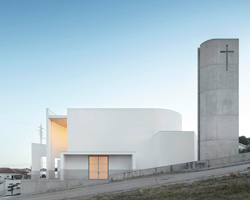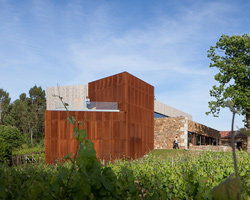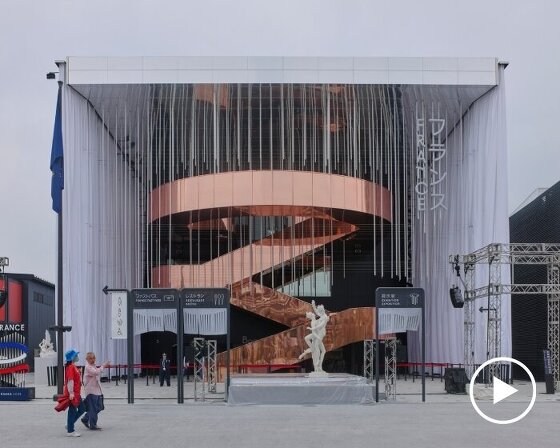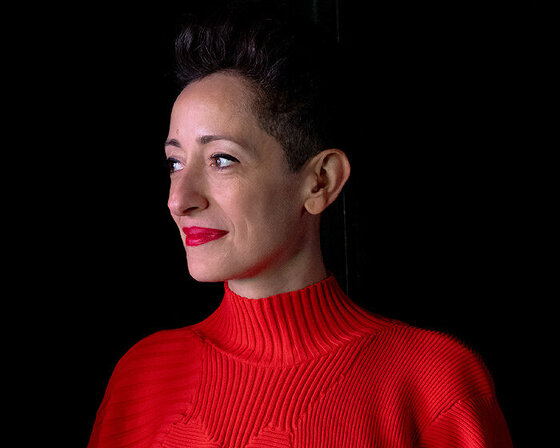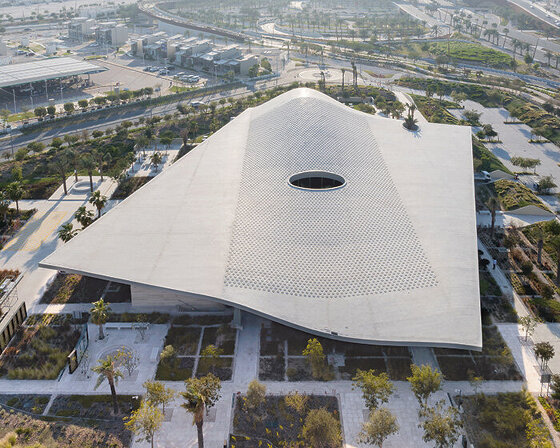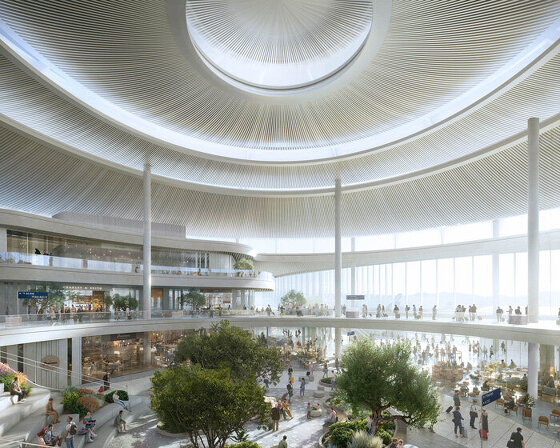FCC arquitectura juxtaposes old and new with distinctive portuguese bar extension
all images by fernando guerra / FG + SG photography
based by the western coast of the island of pico, in the portuguese azores, FFC arquitectura were charged with the transformation and expansion of the ‘cella bar’. the previous site was left in a degenerative state which resulted in most of the structural frame being restored. while preserving the distinct features of the existing building, the extension saw a contemporary addition being merged with the original building. this juxtaposition has introduced a different and sculptural architectural language into the local context. the organic and orthogonal form uses basalt (volcanic rock of the region), concrete and the exterior presents a woven timber texture. as well as sourcing local materials, the design of the scheme references the outline of the island, the rocks, whales and wine casks.
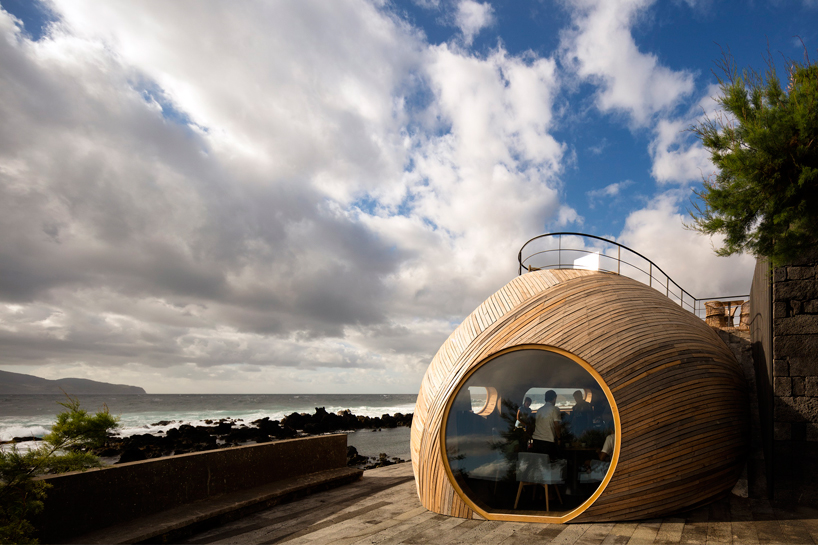
the organic and curved form starkly contrasts with the existing building
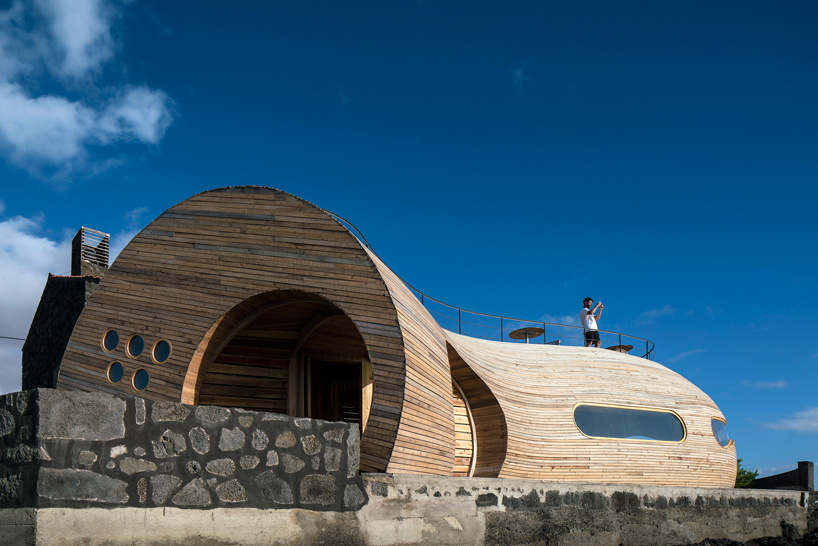
the new build uses basalt, concrete and wood cryptomeria the region
appearing to spill out from the dark stone building, the extension forms the new entrance, the bar and is topped with a roof-top deck. the interiors by paulo lobo, continues with the timber craftsmanship and is seen in the ceiling joints, wine cabinets, walls; instilling an intimate and warm atmosphere. upstairs, the bar continues and leads onto the roof deck where the seating continues with the added scenery of the atlantic ocean on one side, and distant views of the volcano on the other.
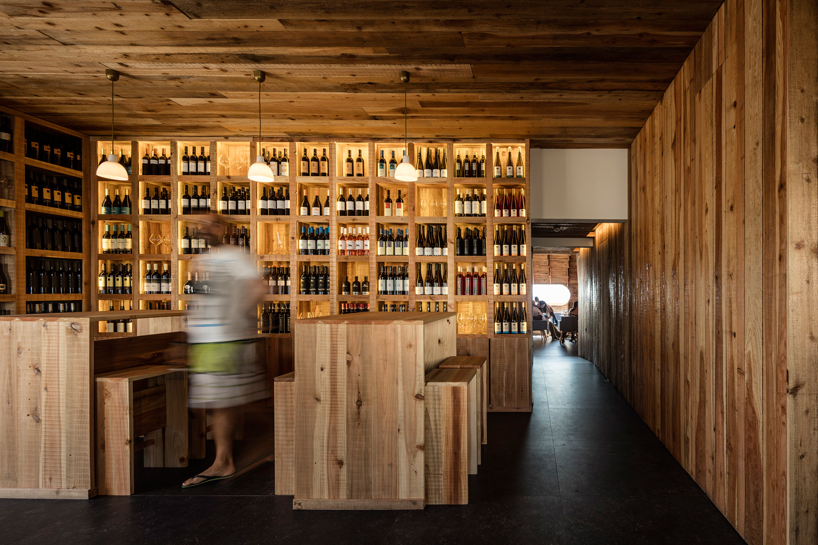
the interiors were designed by paulo lobo
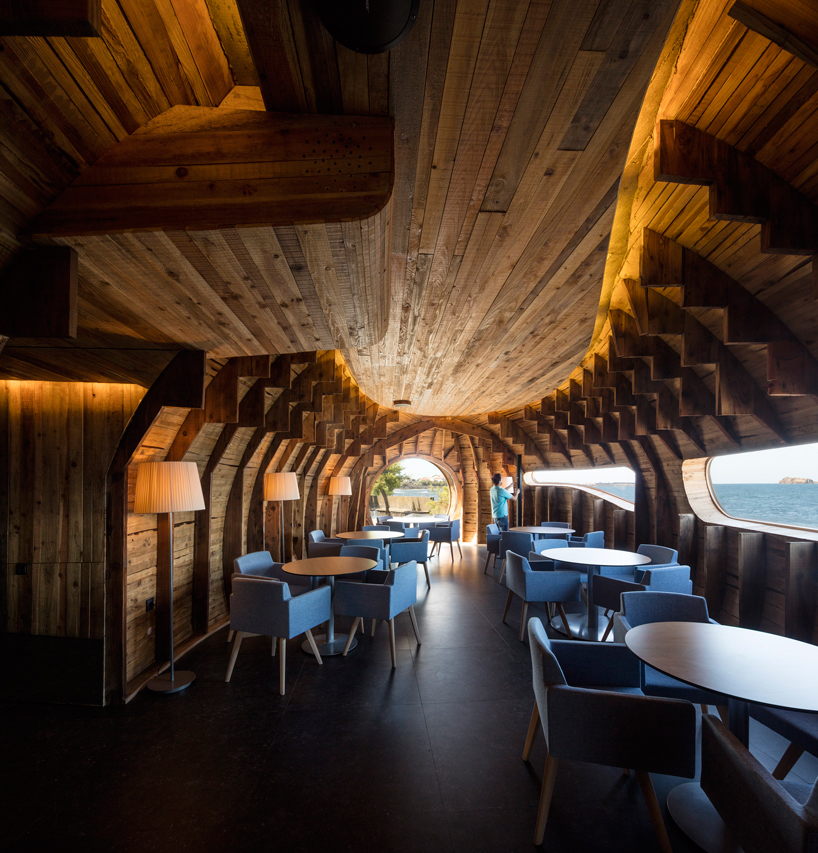
the curving form has influenced the layout inside where pine wood has been used on the walls and ceilings
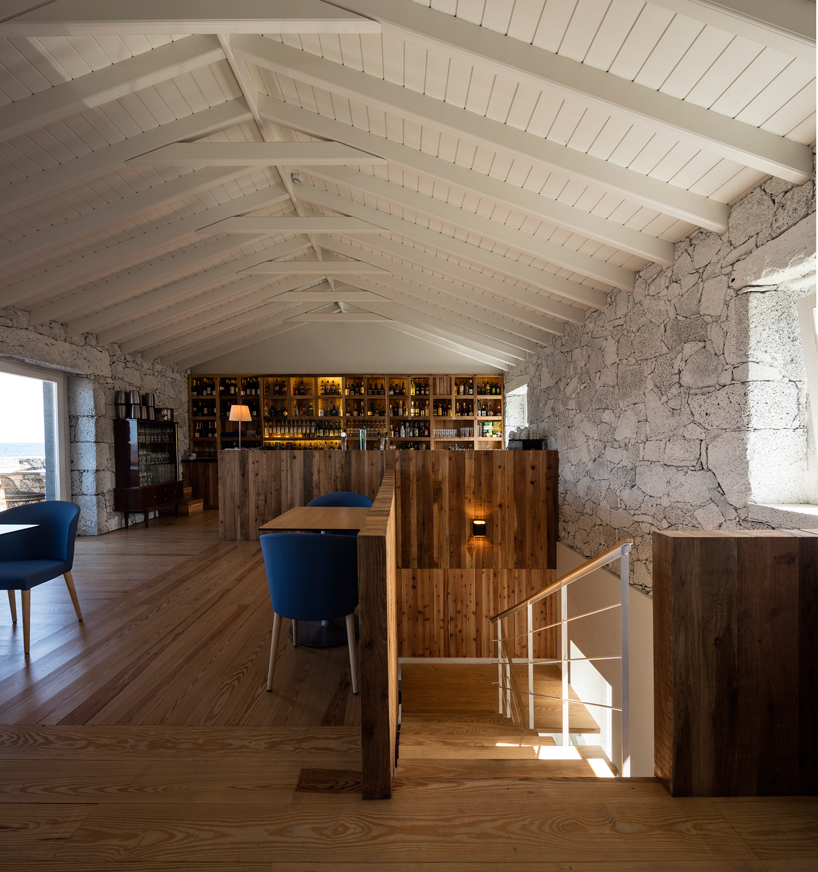
the bar continues upstairs which leads to a outdoor deck
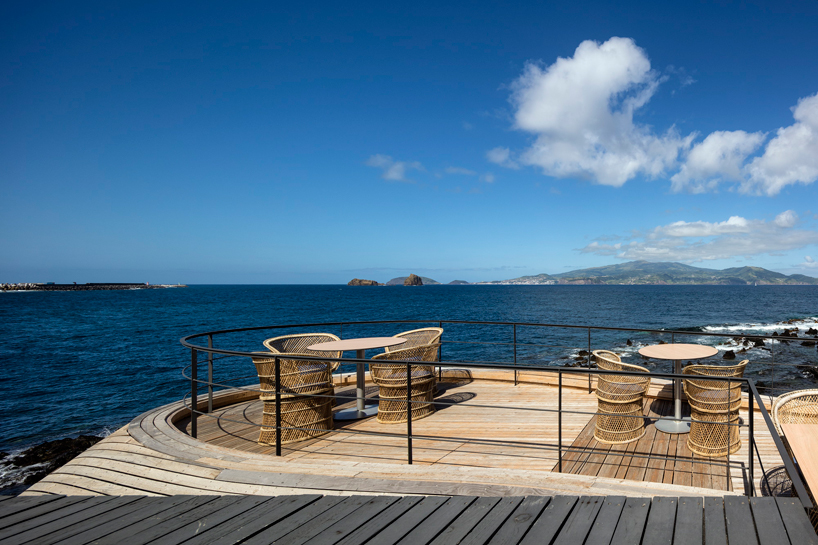
based right by the coast, the upper deck presents sweeping views of the atlantic ocean
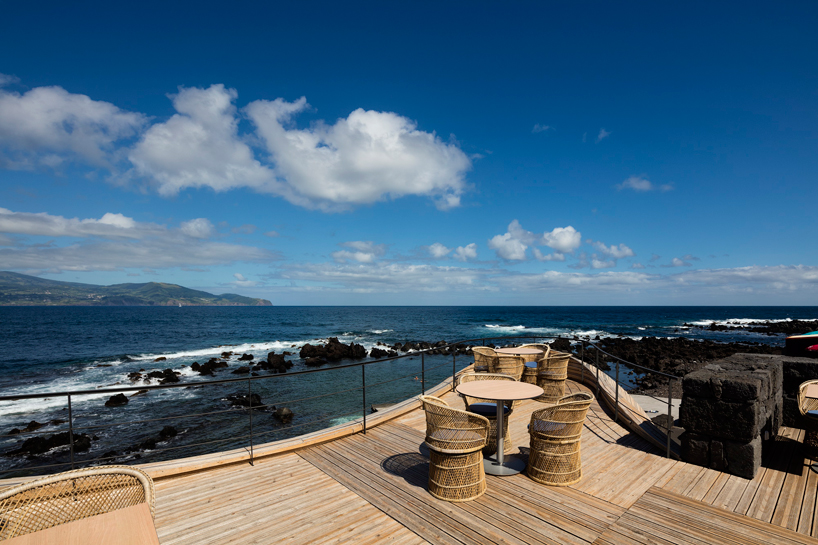
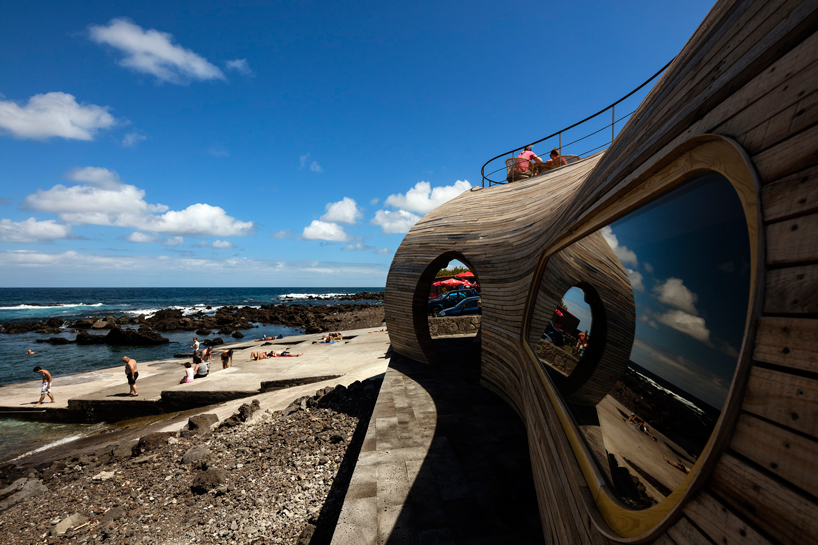
the form of the addition references wine casks and its rocky context
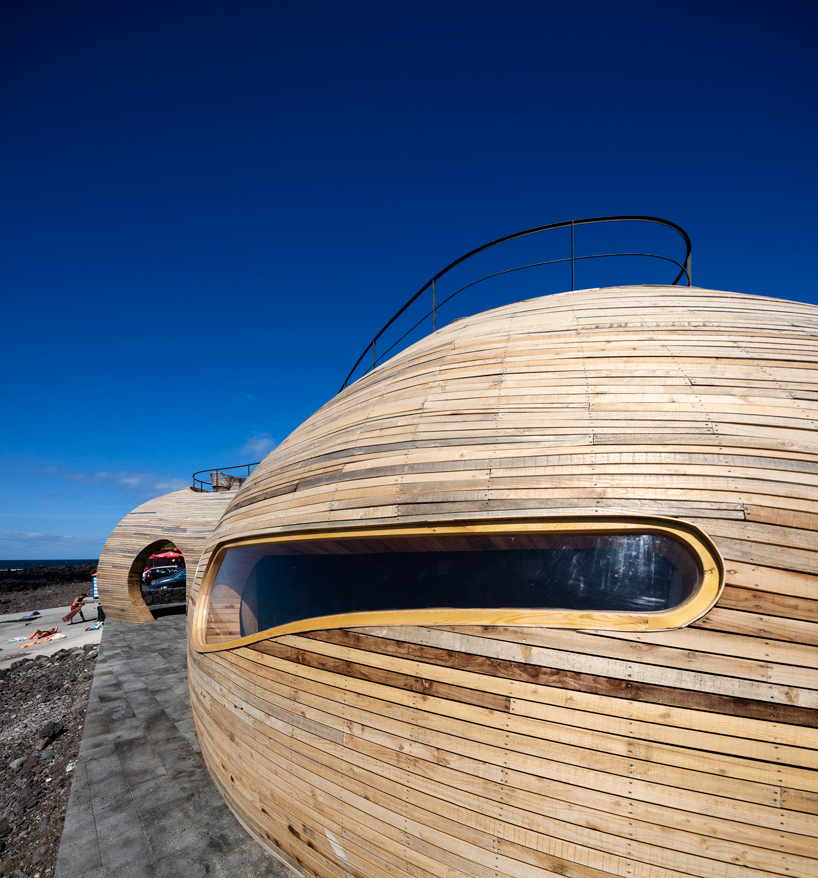
long and narrow windows frames distinct views of the landscape
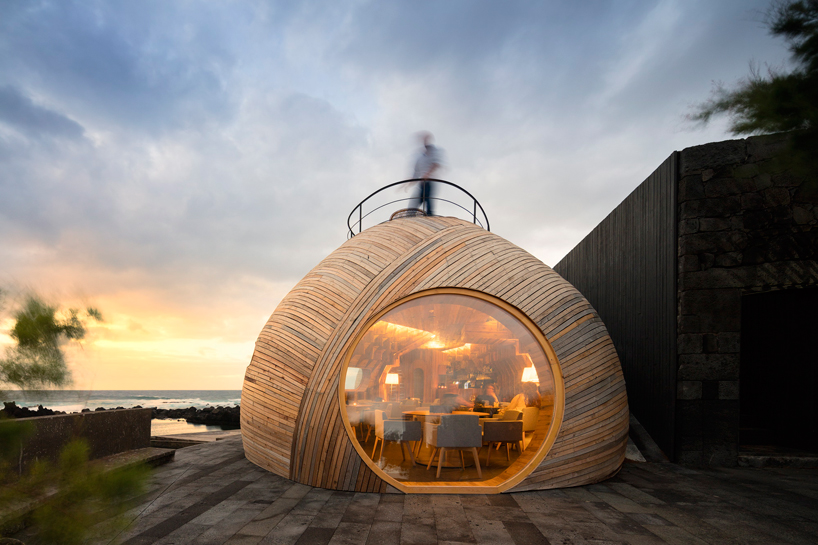
the cella bar at dusk
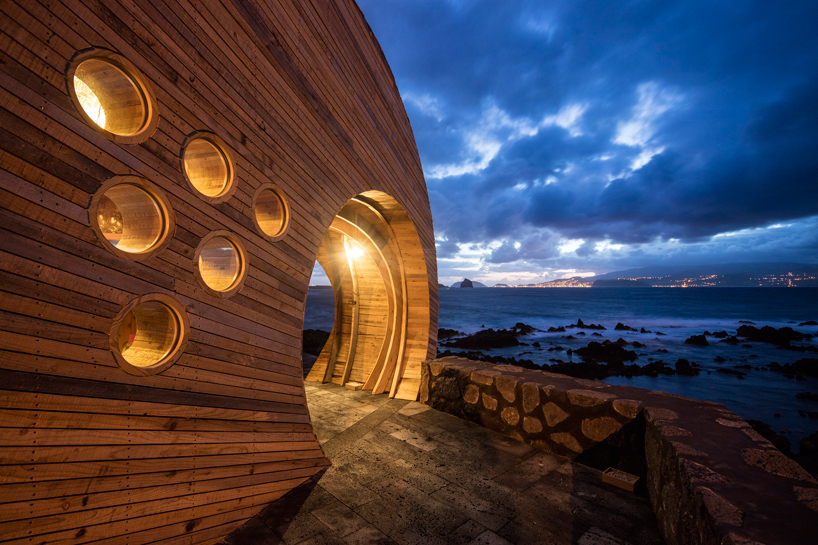
the extension serves as the new entrance, marked by the circular opening
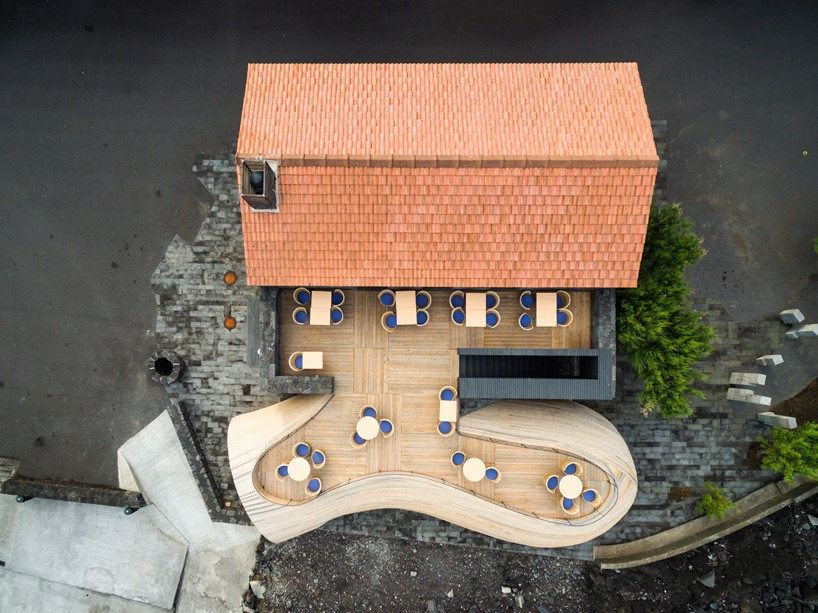
birds-eye view of the scheme
![]()



